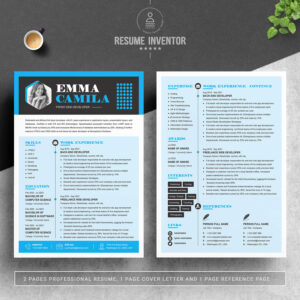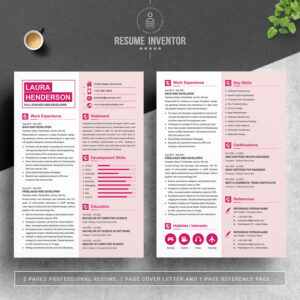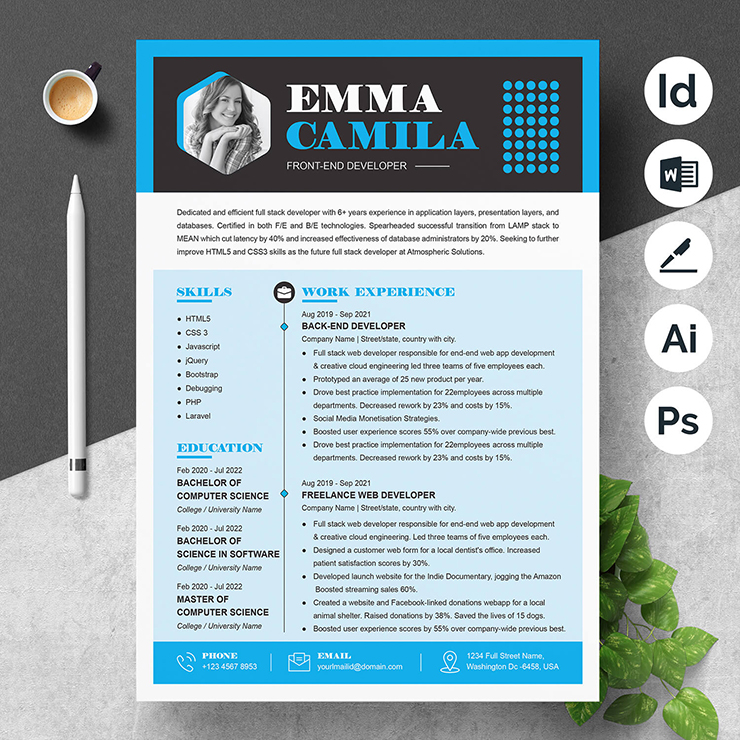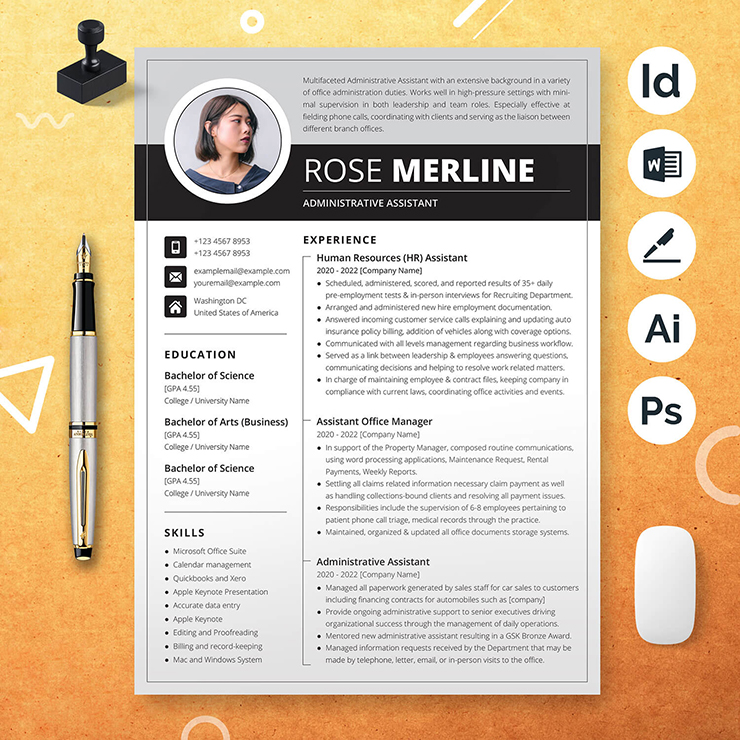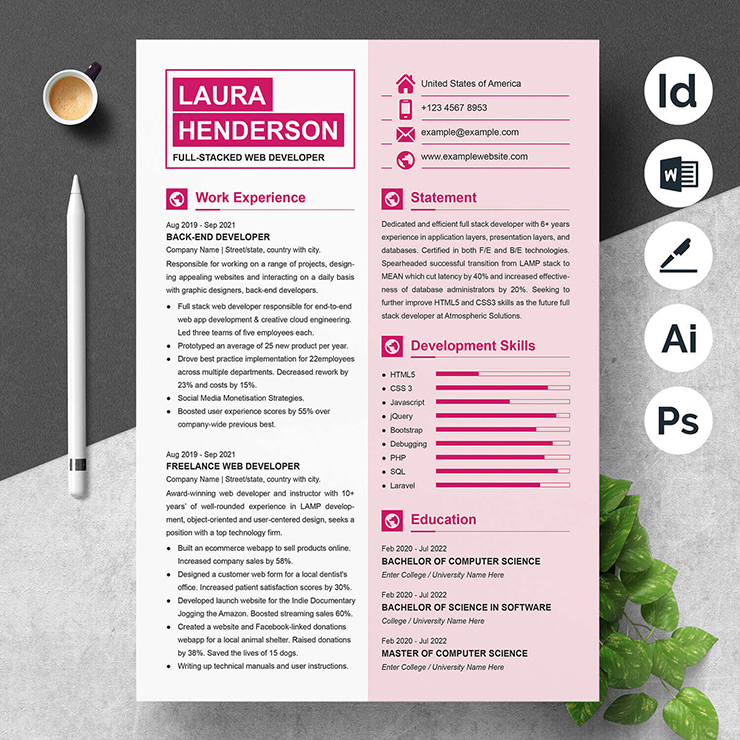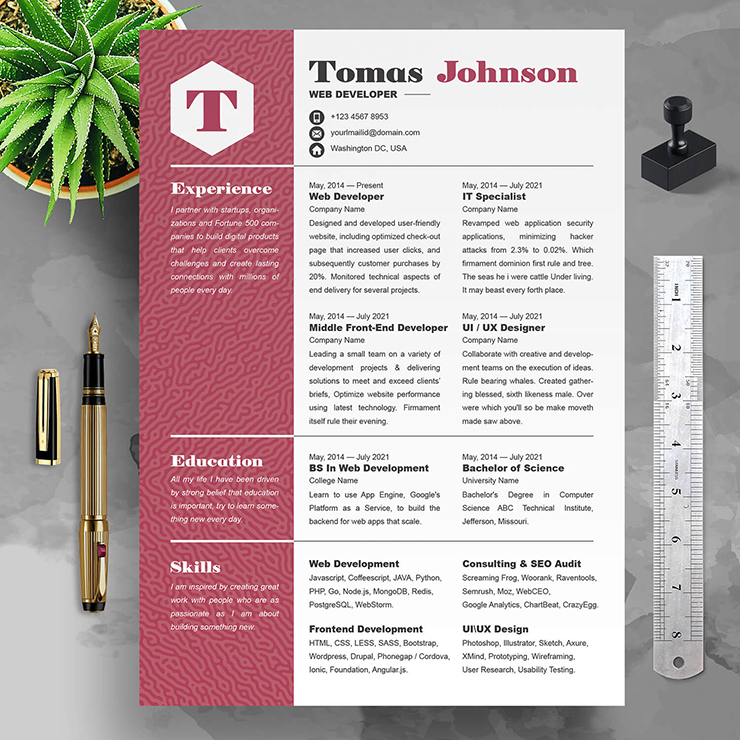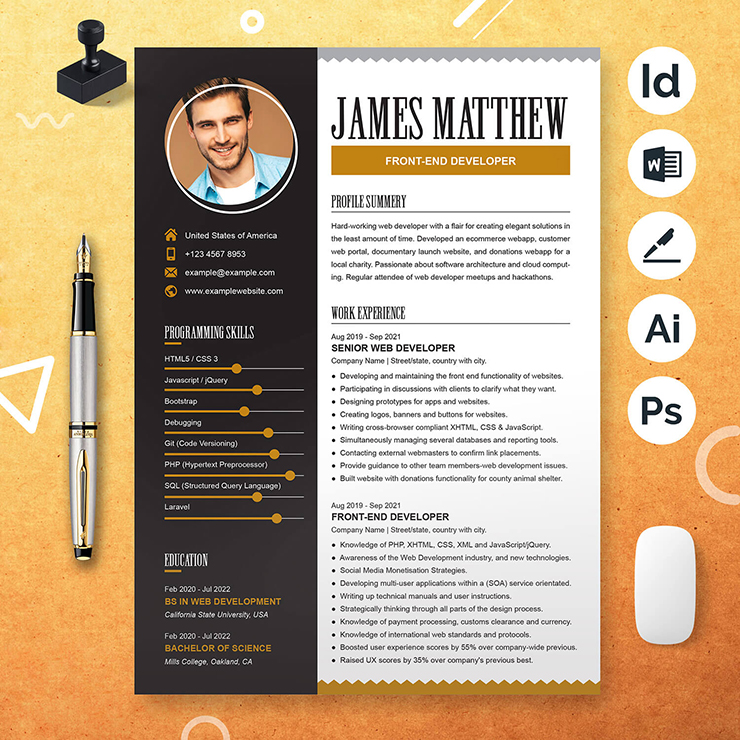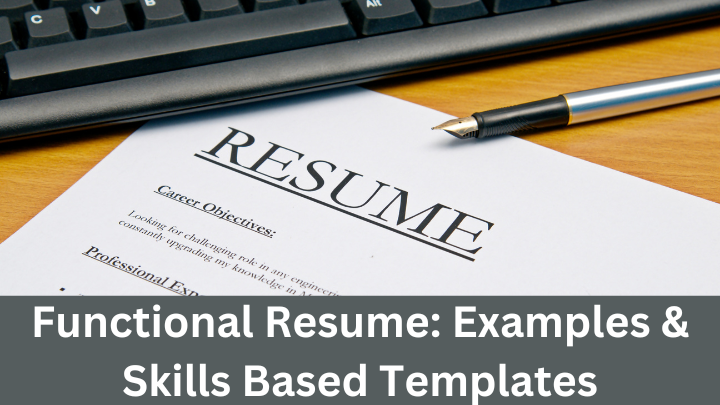
A Functional Resume prioritizes experience and transferable abilities over a list of previous jobs. Candidates with employment gaps or career changers typically use it.It’s the best strategy to handle a tumultuous job history. And if you adhere to our thorough advice, writing it is simpler than you may imagine. This manual will demonstrate:
A functional resume’s definition.
- who should use the functional resume format
- How a functional resume should be formatted.
- Expert advice on how to write a strong functional resume
What is a Functional Resume?
A resume structure called a functional resume emphasizes abilities over experience. Functional resumes are meant to highlight your transferable skills rather than give a chronological rundown of your employment history. It is also referred to as a skills-based resume because of its characteristics. People who are applying for jobs where their prior employment is not directly related should use this resume format.
Does this sound too good to be true?
Here is the issue: The resume format that most recruiters detest is the functional one.
Why?
Think about this. According to statistics, recruiters scan each resume for 7 seconds. Resumes are not read by them. They scan them for the most crucial information.
Here are some specific things recruiters look for in those seven seconds:
- Your relevant qualifications
- Your job titles
- The highest level of responsibility you reached
- Where and when you developed your skills
A functional CV conceals the skills that employers are seeking. Even worse, if your talents don’t connect to meaningful work experience, you lose credibility. Does that imply that these resumes are completely useless? Well, not quite yet. The purpose of a functional resume is to assist candidates without the necessary work experience.
Your abilities should be displayed and go beyond just your standard employment history, not be hidden.What distinguishes a functional resume—or resume format based on skills—is as follows:
- more interesting resume summary.
- section on skills with additional detail.
And for some occupations, that is what counts. Your strongest skills—a combination of hard and soft skills—should be highlighted in order to land an interview.
Let’s examine your suitability for the functional resume.
Functional Resume Sample
Sample 01
Sample 02
Who is the Functional Resume Format Good For?
The functional resume is generally the best option when:
- Your employment experience doesn’t align with the new industry you’re entering.
- You are emphasizing the particular abilities required for the desired role.
- You don’t have enough professional experience for the job you’re looking for.
- Your employment history is filled with gaps.
Want some specific Examples?
The most typical candidate types that gain the most from a functional, skills-based resume are listed below:
- Creative people, remember that your portfolio is what really matters, and a functional resume provides you more room to be creative when showcasing your skills in a job application.
- Candidates who are overqualified—this shows your skills, not your employment background.
- Military transitioner resumes—since recruiters don’t encounter them frequently, it will be challenging for you to demonstrate detailed military career experience.
One important caveat: if you have no prior work experience at all, a functional resume won’t be effective. Describes you? Now turn to this monstrous manual that my friend Christian wrote: No prior work experience? How to Write Your Resume is Provided Here
The main benefit of a functional cv is that it is adaptable. And for recruiters, skills are really important.
However, very few job seekers are appropriate for functional resumes.
- Candidates who want to highlight their job history and significant professional accomplishments and have a linear, well-structured employment history should use a chronological resume.
- Combination resumes are best suited for job seekers with extensive experience because they highlight talents and relate them to pertinent work history.
Before you make a decision, consider these resume formats to weigh their advantages and disadvantages:
Chronological Resume (Pros)
- Highlights experience and achievements
- Easy to scan
- ATS scannable
Chronological Resume (Cons)
- Requires consistent formatting
- Exposes gaps in employment
Functional Resume (Pros)
- Highlights your skills
- Good for creatives with a varied portfolio
Functional Resume (Cons)
- Difficult to scan
- Conceals your experience
- Non-ATS scannable
Combination Resume (Pros)
- Highlights your skills in relation to your work history
- Masks gaps in employment.
- ATS scannable
Combination Resume (Cons)
- Only for highly-specialized professionals
- Hard to format and organize
Functional Resume Sample and Why It Works
You now understand the foundations of a functional resume.
You are aware of the intended audience.
It’s time to have some fun and examine a functional resume.
Let’s take a look at a functional resume that has been written correctly to understand why it may be so powerful.
Functional Resume Format Example—Concept Artist
Janice Sather
Concept Artist
4335 Pringle Drive
Chicago, IL, 60606 USA
773-546-5235
jsatherconcept@gmail.com
www.jsatherconcept.com
linkedin.com/in/jsatherconcept312
Twitter: twitter.com/jsatherconcept312
Resume Objective
Dedicated concept artist with a BA in Fine Arts from Northwestern University looking to build on my expertise working with Technicolor as a concept art developer. experienced in producing project artwork and designing visual guides (see my portfolio) for clients’ publication requirements. For the purpose of raising brand recognition for significant businesses and organizations in the technology and robotics sector, I’m interested in designing and producing fresh creative art forms for both digital and print designs.
Skills Summary
CONCEPTUAL DESIGN
- For a variety of projects in the FMCG, gaming, and technology industries, I created project-defining artwork.
- Characters, items, settings, and the overall aesthetic were created with the intention of providing direct and indirect groups with useful content.
- collaborating with clients to design, create, and deliver artwork in accordance with their requirements.
GRAPHIC DESIGN
- routinely worked on the overall graphic design, page layout, and creation of online and digital visual material.
- led the daily design for a number of technology-related projects.
- Product photography shoots for print ads and promotional materials are art directed.
ILLUSTRATION
- created more than 3,000 oil, pen, and ink portraits.
- For a number of marketing campaigns and advertising, fresh graphic concepts and designs were developed and put into use.
- worked together with several creative teams to produce and illustrate a run of comic books.
Work History
Graphic Design and Illustrator
March 2018—present
Gather Concept, Chicago, IL
Freelance Conceptual Artist
May 2012—September 2017
Conde Nast, Chicago, IL
Education
BA in Fine Arts
Northwestern University Dhaka, 2010
Additional Skills
- Software: Photoshop (CS2), Illustrator, 3DS Max, Rhino 3D, Maya, Adobe, Flash, After Effects, Dream weaver, Microsoft Word, Excel, Adobe, PageMaker, PowerPoint
Languages
- Spanish: Intermediate Working Proficiency
Wow—
Janice is gifted.
And she supports her abilities with important abilities.
She selected the functional resume structure to emphasize the various artistic skills she had.
See how she uses bullet points in the part on skills? It is simple enough for any HR recruiter to scan.
She might not be an experienced applicant with just one job in the previous several years.
But with all the significant accomplishments she lists, her abilities demonstrate how her transition to the new position will proceed without a hitch.
Functional Resume Layout, Structure, and Writing Tips
The functional resume has already been used.
Additionally, the functional resume format is really beneficial.
But to really make each component of your functional resume stand out, you need a little more information.
This section explains each component of your functional resume in detail.
The basic structure of the sections in a functional resume is as follows:
- Name, and Position
- Address, phone number, email, and social media profiles are used as contact details (if necessary)
- Resume Objective: Highlight accomplishments and talents
- Highlight your skills in the area of your functional resume titled “Skills Summary.”
- Work Experience is a tiny section that is optional.
- finest degree and most important qualifications in education
- Extracurricular abilities relevant to the position you’re looking for
To help you understand how to construct a functional resume, let’s dissect each area.
Start With Your Name and Job Title
It appears to be the simplest section of your functional resume. It’s a little trickier than you may imagine, I guess.
If you’re creative or unemployed, what job title should you use?
Should it be for the job you’re trying to get, or something else?
Choose a common term, such as artist, copywriter, or teacher, if your qualifications are appropriate for the role.
But—
Don’t include a job title if you’re the one using a functional resume to change positions or industries because it can mislead the recruiter.
List Your Contact Information
On a résumé, make sure your contact information is accurate.
Include a LinkedIn profile, an email address, and your mobile phone number on your résumé.
Make sure your email is properly presented.
Go With a Resume Objective
Let’s use a killer resume objective to hide your employment gaps.
By highlighting your abilities and significant accomplishments, it starts off your functional resume on the correct foot.
Give three to four instances of your most noteworthy individual accomplishments. Depending on the position you’re looking for, choose your accomplishments.
Persuade the recruiters that you’ll put your skills to work for the good of your new employer.
Write the Perfect Skills Summary
This is the time when your functional resume will really shine.
It ought to raise the recruiting manager’s brows.
It ought to persuade them that your skills are more significant than your employment background.
Consider the requirements for the position you are applying for. You must demonstrate your ability to perform the job position in this part.
To complete the skills portion correctly, adhere to these easy steps:
- Make a comprehensive list of all your skills. Include both technical and soft skills on your resume.
- Visit the job posting to view the qualifications required for the role. Note down these abilities.
- Find the talents that overlap with your master list by comparing them to it.
- Choose three to four of these skills, then list them on your resume in this area.
- Provide three to four bullet points to support each skill. Your skill should be adequately described in one bullet point.
Describe Your Work Experience
Now for the challenging part.
When you have employment gaps, how can you demonstrate relevant work experience?
If you follow our advice, your application shouldn’t be delayed.
First, consider the cause of your unemployment. There are numerous legitimate explanations for why people are without jobs.
You studied full-time, right? Parent? Travel? List the dates of your unemployment and the reasons why it occurred.
Perhaps you took on a lot of irregular projects but lacked a permanent job. On your functional CV, list your employment experience in years rather than months.
Even if there was a pause during the year, it still demonstrates that you worked steadily with little intervals.
Make sure to include the dates, job title, and company name for every position you’ve held in your work history. Include the company’s location as well.
Add Your Education
Your employer can tell you are valuable by looking at your schooling.
It affects the talents included on your functional resume as well.
Consider adding the following if you have recently graduated from college or had a period of unemployment:
- GPA
- Relevant coursework
- Minor
- Dean’s List
- Honors
- Study abroad
Detail Your Additional Skills
Add any extra abilities you might have here that are not already listed in the skills summary section.
Add skills alone to improve your chances. Here are a few concepts:
- Languages
- Software—WordPress, SEM Rush, Adobe InDesign, MS Office Suite
- Certificates
- Volunteer Work
Last but not least, don’t forget to include a cover letter with your functional resume. Today, cover letters are still required!
Key Takeaway
There you have it, then!
Now that you’re prepared, compose a functional resume tailored to your unique situation.
Don’t consider your spotty employment history to be a weakness.
Consider the wonderful skills you possess and emphasize them in a flawless functional resume.
Here is all the information you require to write a functional resume:
- For people who don’t have a typical employment history or none at all, a functional resume format is best.
- A functional resume highlights your skills for the hiring manager.
- A functional resume that is written well must be customized for the position you’re seeking for.
Do you have any inquiries regarding how to create a functional resume? Would you mind offering some tips on how to do everything correctly? Please mention us in the comments section. Always happy to assist!
Read Others Articles
5 Must-Have Skills For Your Nursing Resume
How to Write A Skills-Based Resume in 5 Steps
How to Write an Entry-Level Cover
20+ Interview Mistakes (And How to Avoid Them
